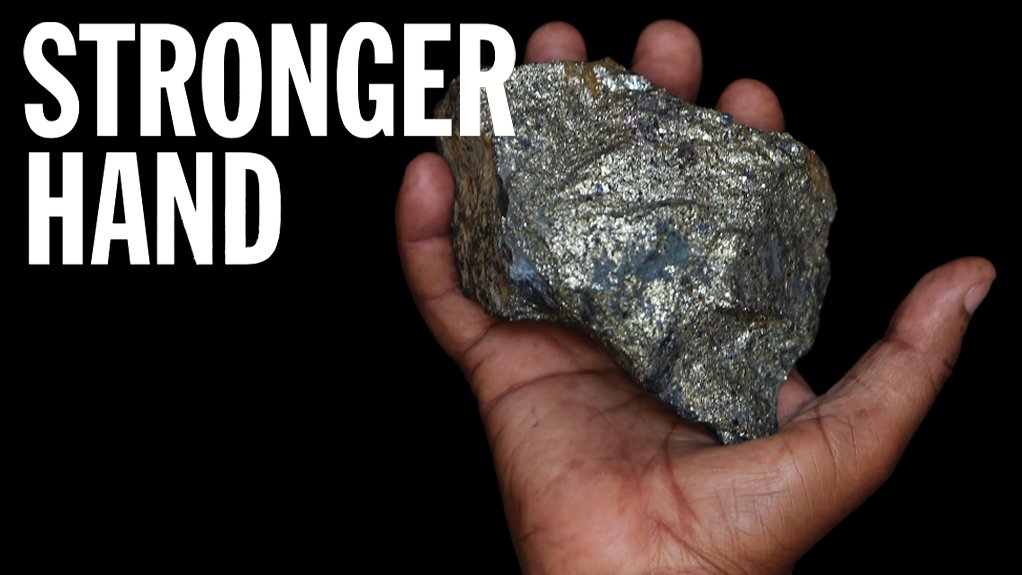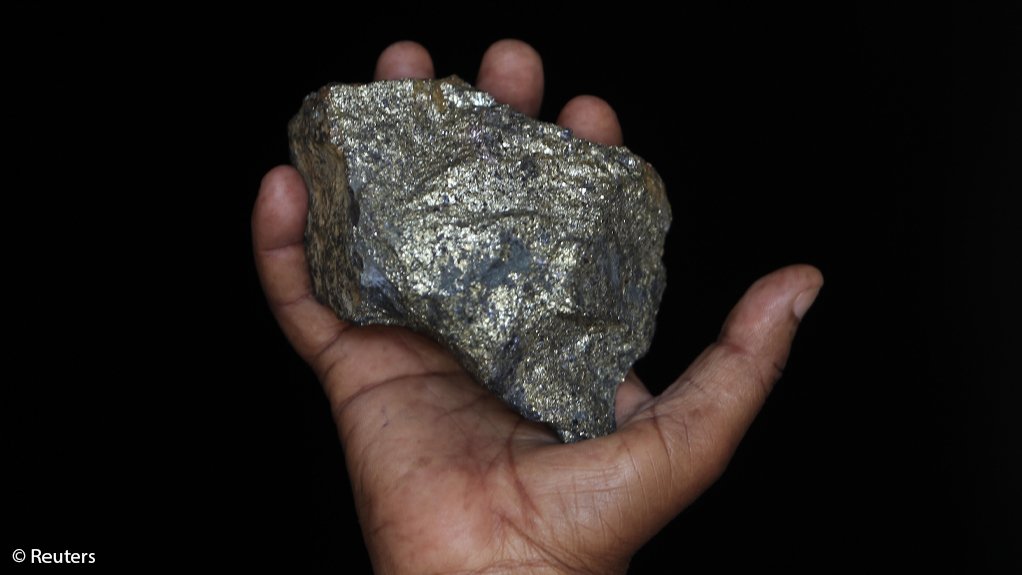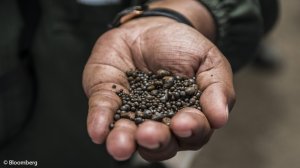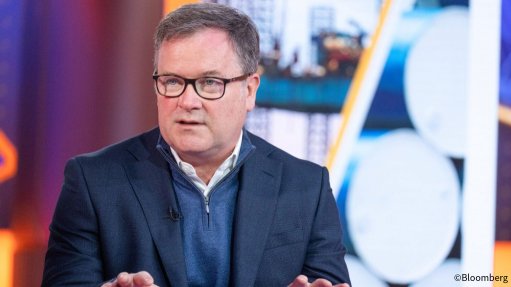To capitalise on green transition, Africa urged to add value to critical minerals





GREEN MINERAL ENDOWMENT Africa boasts an abundance of many of the minerals required for the energy transition to accelerate. Copper/cobalt ore is seen here.
Photo by Reuters
AFRICAN CAPACITY BUILDING Africa needs to increase its value addition to its mined materials, such as cobalt (nuggets of which are seen here), to ensure its minerals serve to boost regional economies and industrial development
Photo by Bloomberg
FUTURE MINERALS With the addition of value to African-mined minerals, the continent stands to benefit more from its naturally-occurring resources, boosting continental expertise and beneficiation. Cobalt cathodes are seen here.
Photo by Bloomberg
The global transition to lower-carbon economies and societies presents resources-rich Africa with an opportunity to boost growth and employment by playing a greater role in mining and processing the so-called green or critical minerals required for low-carbon technologies.
Green minerals are those used in vast quantities in modern electric systems, such as renewable-energy products, batteries and power distribution, and include copper, cobalt, lithium, manganese, graphite and nickel.
However, as the world’s major powers increasingly compete for green technology production capacity and search for supplies of green minerals, Africa’s priorities regarding value addition and industrialisation could be overshadowed.
To avert this, Africa needs to add value to its green minerals supply chains to capture a greater portion of the minerals supply chain, boosting its overall contribution to green technology development and the broader manufacturing sector.
It also needs to build on its resources-based industrialisation to better use resources available on the continent, thereby helping other African neighbours grow their industrial and resources bases, and economies.
This was the general sentiment during a webinar hosted by the South African Institute of International Affairs on June 9, with the theme Green Minerals: Opportunities for Africa.
African Development Bank (AfDB) chief minerals officer Jerry Ahadjie said during the webinar that minerals played a significant role in developing Africa, with the ongoing energy transition presenting another “huge opportunity” to further bolster economic growth on the continent.
To expand Africa’s use of its mined materials requires “strong political commitment” from governments, which extends to “political will” and the right policies towards value addition and local-content use, added Africa Union (AU) minerals development centre interim director Marit Kitaw.
However, she emphasised that now was the time to capitalise on the continent’s minerals, as the major electric vehicle (EV) and battery systems makers looked for alternatives to cobalt and other battery minerals “because they want to diversify demand”.
The development of EVs and the roll of the energy transition requires the development of vast volumes of green minerals, and this requires African governments and businesses to act fast in developing local capacities to mine, beneficiate and add value in the green minerals supply chain, she added.
South African Institute of International Affairs Africa resources programme governance head Alex Benkenstein stated that “the world is in the midst of a major transition” to EVs, with significant commitments from the major markets, such as current leading EV exponent China, the European Union (EU) and the US in terms of policy movements and goals.
“The EU has said that, by 2025, it wants one-million EV charging stations in the region and 30-milion EVs on the road by 2030. China said that, by 2030, their automakers should be producing at least 40% EVs.
“All the big automotive manufacturers have set very ambitious targets to achieve by 2025, 2030 and 2035 in terms of how they want to bring in EVs,” he added.
Kitaw described green minerals production in Africa specifically as of “noteworthy” significance, as the continent is endowed with 30% of the world’s mineral deposits.
“Africa’s mineral wealth is and remains an important driver for structural transformation, as enshrined in Agenda 2063 of the AU.”
The principles of the AU’s African Mining Vision centre around ensuring that there is enhanced exploitation of mineral resources for the growth and sustainable development of Africa.
Therefore, this ambition was congruent with global ambitions to decarbonise to avoid global average temperatures breaching 1.5 ºC above preindustrial-era levels, presenting a big opportunity for Africa to supply the minerals of current and future low-carbon technologies, Kitaw argued.
Key Elements
The core minerals required for EVs include copper, cobalt, lithium, nickel, manganese and graphite, with EVs also generally more mineral-intensive than traditional internal combustion engine (ICE) vehicles.
“So, the demand for [EV metals] is going to increase significantly – about twice as much copper is used in an EV as is used in [an ICE] vehicle,” Benkenstein added.
Kitaw noted that other materials, such as copper and iron, were relevant for the African continent, while the Democratic Republic of Congo (DRC) also has 50% of the world’s cobalt reserves and produces 70% of global demand.
The projected demand for cobalt, on the back on EV adoption and the energy transition, is expected to increase by about 500% from current levels by 2050.
A push in demand for graphite will benefit countries such as Madagascar, Mozambique and Tanzania, while higher demand for lithium can benefit Zimbabwe, which hosts reserves of the mineral.
Kitaw said the prevalence of green minerals in Africa could create a regional value chain for the industry: “It is very clear that productive capabilities and expanding the African Continental Free Trade Area [will benefit Africa in terms of green minerals supply].”
However, Africa is challenged in terms of its efforts to capture, to a greater extent, lucrative downstream markets, such as those for EVs, renewable-energy technology and battery storage manufacturing.
Kitaw cited Bloomberg in stating that EVs would represent $7-trillion in the market by 2030, which could increase to a further $40-trillion to $60-trillion by 2050.
However, she noted that, currently, Africa would capture only $11-billion of the EV manufacturing market because it provided only the raw materials, with the remaining value lost to beneficiation in other countries, mostly China.
Benkenstein noted that a certain volume of raw materials required for an item of technology originating in Africa did not necessarily mean that an African country could position itself as a competitive producer of green technology products.
Focus Required
“We have to recognise that the beneficiation debate that has been part of the African Mining Vision, which is now more than ten years old, is not a new debate – it is not going to be easy.”
However, he also warned that, while it might be significantly difficult for Africa to move towards beneficiating its raw materials, it should not slide towards the opposite end of the debate and accept that local value addition was a mere dream that would never materialise.
He added that efforts could be made, with “very careful coordination and intervention”, as well as significant investment, being paramount.
Concerning Africa-based beneficiation, it was not simply about producing a product, but rather about producing it competitively, noted Benkenstein.
Moving forward, he said Africa needed to be explicit about working on a regional basis within the continent.
Standing in the way of Africa’s adding value to its mined minerals was an investment environment that needed to change in terms of the mindset of institutional stakeholders, governance and the predictability of regulatory provisions.
In addition, with a forecast fivefold increase in demand for green minerals by 2050, said Benkenstein, exploration for new green minerals was not matching the pace of future demand, implying that not enough green minerals would be mined by the time peak demand occurred.
“So, there needs to be a strategic move for Africa to really increase the rate of mineral exploration to unearth more minerals. If you take exploration or knowledge of minerals in Africa versus in Europe or Australia or the US, Africa is hugely underexplored. So, we need to work on that.”
Another “river to cross” in boosting African green minerals value addition is inadequate infrastructure and access to energy on the continent.
Africa also faces the hurdle of low demand for EVs as it tries to attract investment to build local beneficiation capacity: “Africa imports just about 1 000 EVs, [mostly to] the south point of Africa,” Ahadjie added.
The continent does not have an EV battery manufacturing plant, which means that value creation is lost, which actually increases supply chain emissions to get EV batteries to Africa from other continents.
In this regard, Ahadjie pointed out that, together with several partners, the AfDB had forged ahead to address these issues, formalising the Green Minerals Strategy for Africa, with input from the so-called ‘green minerals partners’, comprising the African Legal Support Facility, the AU, the United Nations (UN) Economic Commission for Africa, the UN Development Programme, the Africa Finance Corporation and Afreximbank.
“We conceived the idea of bringing [Africa] in line with [EV and battery development strategies from] countries such as the EU, the US, Canada, Australia and most other developed countries or regional blocs,” he noted.
The Green Minerals Strategy for Africa is focused on addressing several challenges, including improving the investment environment, as well as strengthening institutions, policy and regulatory reforms. Other areas of focus include building on mineral exploration associated databases.
Comments
Press Office
Announcements
What's On
Subscribe to improve your user experience...
Option 1 (equivalent of R125 a month):
Receive a weekly copy of Creamer Media's Engineering News & Mining Weekly magazine
(print copy for those in South Africa and e-magazine for those outside of South Africa)
Receive daily email newsletters
Access to full search results
Access archive of magazine back copies
Access to Projects in Progress
Access to ONE Research Report of your choice in PDF format
Option 2 (equivalent of R375 a month):
All benefits from Option 1
PLUS
Access to Creamer Media's Research Channel Africa for ALL Research Reports, in PDF format, on various industrial and mining sectors
including Electricity; Water; Energy Transition; Hydrogen; Roads, Rail and Ports; Coal; Gold; Platinum; Battery Metals; etc.
Already a subscriber?
Forgotten your password?
Receive weekly copy of Creamer Media's Engineering News & Mining Weekly magazine (print copy for those in South Africa and e-magazine for those outside of South Africa)
➕
Recieve daily email newsletters
➕
Access to full search results
➕
Access archive of magazine back copies
➕
Access to Projects in Progress
➕
Access to ONE Research Report of your choice in PDF format
RESEARCH CHANNEL AFRICA
R4500 (equivalent of R375 a month)
SUBSCRIBEAll benefits from Option 1
➕
Access to Creamer Media's Research Channel Africa for ALL Research Reports on various industrial and mining sectors, in PDF format, including on:
Electricity
➕
Water
➕
Energy Transition
➕
Hydrogen
➕
Roads, Rail and Ports
➕
Coal
➕
Gold
➕
Platinum
➕
Battery Metals
➕
etc.
Receive all benefits from Option 1 or Option 2 delivered to numerous people at your company
➕
Multiple User names and Passwords for simultaneous log-ins
➕
Intranet integration access to all in your organisation






















